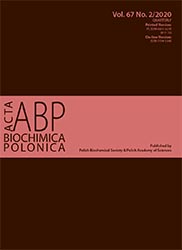Neogambogic acid induces apoptosis of melanoma B16 cells via the PI3K/Akt/mTOR signaling pathway
Neogambogic acid and melanoma cells
Abstract
Background: Neogambogic acid, as one of the main components of gamboge, exhibits high activities against various tumors. Objective: To explore the mechanism by which melanoma B16 cell apoptosis was induced by neogambogic acid. Methods: Melanoma B16 cells were treated with different concentrations of neogambogic acid solutions (0, 1.5, 3.0, 6.0 μM). The proliferation inhibition rate was measured by MTT assay. Cell morphology was observed by inverted microscope. Cell migration and invasion were tested by Transwell assay. Flow cytometry was performed to detect the apoptosis rate and cell cycle of B16 cells. The expressions of PI3K/Akt/mTOR signaling pathway-related proteins were detected by Western blot. Results: The proliferation inhibition rate of B16 cells significantly increased with rising neogambogic acid concentration (P<0.05). The invasive and migration capacities of B16 cells decreased significantly after treatment with neogambogic acid (P<0.05). The apoptosis rate also increased with rising concentration of neogambogic acid. After 24 h of treatment, the percentage of G0/G1 phase cells increased gradually as the neogambogic acid concentration rose, whereas those of S phase and G2/M phase cells decreased. With increasing concentration of neogambogic acid, the expressions of p-PI3K, p-Akt and p-mTOR proteins reduced in a time-dependent manner, but those of PI3K and Akt proteins remained basically unchanged. Conclusion: Neogambogic acid can inhibit the proliferation, invasion and migration of melanoma B16 cells and induce their apoptosis, which may be regulated via the PI3K/Akt/mTOR signaling pathway.
Acta Biochimica Polonica is an OpenAccess quarterly and publishes four issues a year. All contents are distributed under the Creative Commons Attribution-ShareAlike 4.0 International (CC BY 4.0) license. Everybody may use the content following terms: Attribution — You must give appropriate credit, provide a link to the license, and indicate if changes were made. You may do so in any reasonable manner, but not in any way that suggests the licensor endorses you or your use.
Copyright for all published papers © stays with the authors.
Copyright for the journal: © Polish Biochemical Society.


